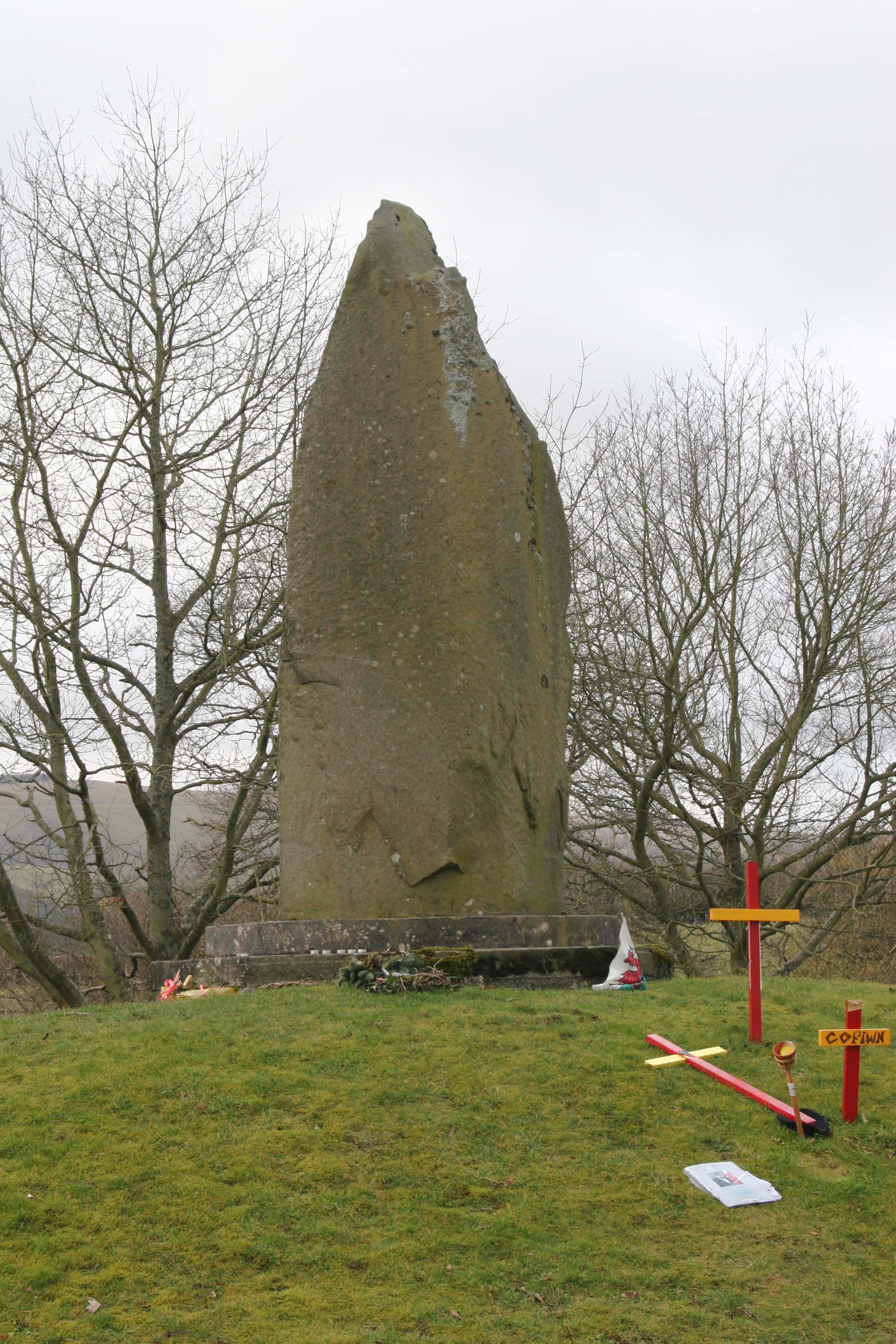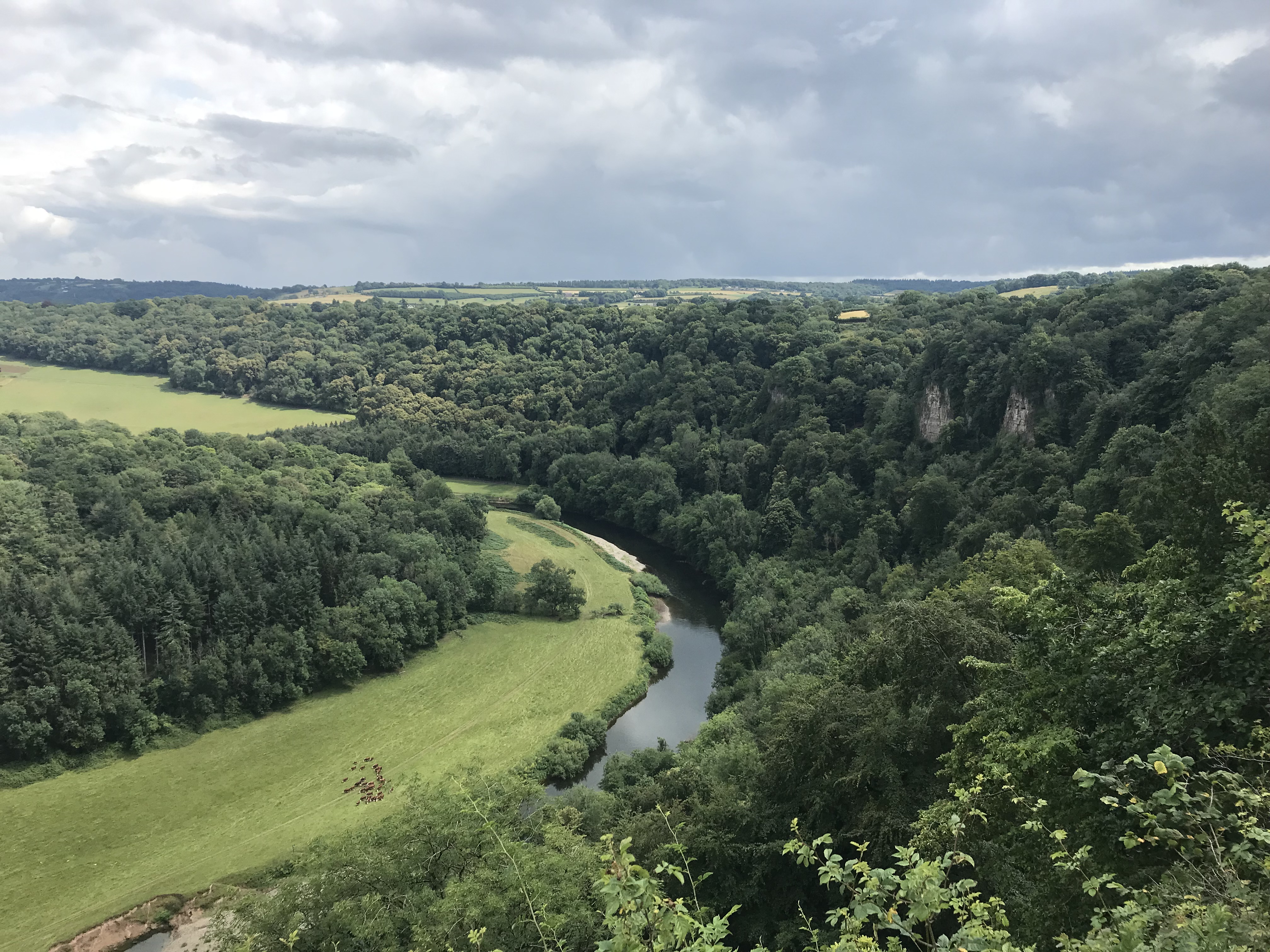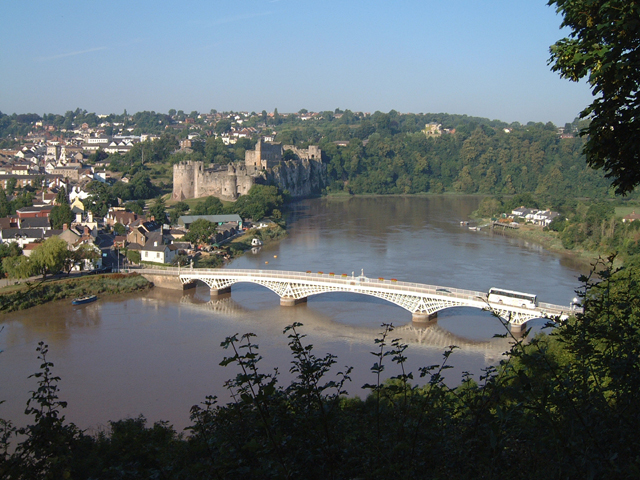|
Builth
Builth Wells (; ) is a market town and community in the county of Powys and historic county of Brecknockshire (Breconshire), mid Wales, lying at the confluence of rivers Wye and Irfon, in the Welsh (or upper) part of the Wye Valley. In 2011 it had a population of 2,568. Etymology ''Builth'' is a longstanding anglicisation of the Old Welsh or , which combines () ' ox' and (later ) ' lea or leas'. The town added ''Wells'' in the 19th century when its springs were promoted as a visitor attraction. Its modern Welsh name means 'Saint Mary in Ox Leas'. In the centre of the town is a large mural (about by wide) depicting , who was killed at the Battle of Orewin Bridge on 11 December 1282. Governance There are two tiers of local government covering Builth Wells, at community (town) and county level: Builth Wells Town Council and Powys County Council. The town council is based at Strand Hall on Strand Street, which also serves as a community hall and events venue. F ... [...More Info...] [...Related Items...] OR: [Wikipedia] [Google] [Baidu] |
Brecknockshire
Brecknockshire ( or ), also known as the County of Brecknock, Breconshire, or the County of Brecon, was Historic counties of Wales, one of the thirteen counties of Wales that existed from 1536 until their abolishment in 1974. It was created in 1536 under the Laws in Wales Act 1535, and from 1889 it was an History of local government in Wales, administrative county with a county council; the administrative county was abolished in 1974. The county was named after the medieval Welsh territory of Brycheiniog, which was Anglicisation of names, anglicised to "Brecknock" and also gave its name to the county town of Brecon. The former county's area is mountainous and primarily rural. Geography Brecknockshire was bounded to the north by Radnorshire, to the east by Herefordshire and Monmouthshire (historic), Monmouthshire, to the south by Monmouthshire and Glamorgan, and to the west by Carmarthenshire and Ceredigion, Cardiganshire. The county is predominantly rural and mountainous. The B ... [...More Info...] [...Related Items...] OR: [Wikipedia] [Google] [Baidu] |
Brecon, Radnor And Cwm Tawe (UK Parliament Constituency)
Brecon, Radnor and Cwm Tawe () is a constituency of the House of Commons in the UK Parliament, first contested at the 2024 general election, following the 2023 review of Westminster constituencies. The current MP is David Chadwick of the Liberal Democrats. The constituency name refers to the historic counties of Breconshire and Radnorshire as well as the Swansea Valley, known as ''Cwm Tawe'' in Welsh. Boundaries The seat covers the large rural areas of the historic counties of Brecknockshire and Radnorshire (currently administered as part of the unitary authority of Powys) which had previously formed the abolished Brecon and Radnorshire constituency, as well as the town of Pontardawe Pontardawe () is a town and a community (Wales), community in the lower Swansea Valley (). it had a population of approximately 7,172 in the 2021 Census for Pontardawe Parish, and forms part of the county borough of Neath Port Talbot. On the opp ... in Neath Port Talbot County Borough whi ... [...More Info...] [...Related Items...] OR: [Wikipedia] [Google] [Baidu] |
Afon Irfon
Afon Irfon (the River Irfon) is a river in Powys, Wales. It flows from the upper slopes of Bryn Garw in the Cambrian Mountains, through the Abergwesyn Valley, past the Nant Irfon National Nature Reserve in the hills above the village of Abergwesyn, and through Llanwrtyd Wells to its confluence with the River Wye at Builth Wells. The source of the Irfon is in the so-called ' Desert of Wales'. Afon Irfon is the listed name of the Site of Special Scientific Interest in the upper reaches of the river Irfon Powys, Wales. Description From its source at AMSL on the upper slopes of Bryn Garw in the Cambrian Mountains the Irfon flows southwards past the foot of the Devil's Staircase, along the Abergwesyn Valley, through the scenic Camddwr Bleiddiad (Wolves' Gorge), and into the Wolves' Pool. It then flows past a forest of sessile oak ''(Quercus petraea)'' to join the Afon Gwesyn at Abergwyesn where it passes beneath the Irfon Forest and the Nant Irfon National Nature Reserve toward ... [...More Info...] [...Related Items...] OR: [Wikipedia] [Google] [Baidu] |
Llywelyn Ap Gruffudd
Llywelyn ap Gruffudd ( – 11 December 1282), also known as Llywelyn II and Llywelyn the Last (), was List of rulers of Gwynedd, Prince of Gwynedd, and later was recognised as the Prince of Wales (; ) from 1258 until his death at Cilmeri in 1282. Llywelyn was the son of Gruffudd ap Llywelyn ap Iorwerth and grandson of Llywelyn ab Iorwerth (also known as Llywelyn the Great, or Llywelyn I), and he was one of the last native and independent princes of Wales before its Conquest of Wales by Edward I, conquest by Edward I of England and English rule in Wales that followed, until Owain Glyndŵr held the title during his Glyndŵr rebellion, rebellion of 1400–1415. Genealogy and early life Llywelyn was the second of the four sons of Gruffudd ap Llywelyn ap Iorwerth, the eldest son of Llywelyn ab Iorwerth, and Senana ferch Caradog, the daughter of Caradoc ap Thomas ap Rhodri, Lord of Anglesey. The eldest was Owain Goch ap Gruffudd and there were two younger brothers, Dafydd ap Gruffy ... [...More Info...] [...Related Items...] OR: [Wikipedia] [Google] [Baidu] |
Jeremy Pugh
Jeremy David Pugh (born 4 March 1960) is a former international rugby union player. He played for the Wales national rugby union team in the late 1980s. Pugh played his club rugby for Neath. He first played for Wales in 1987 against the USA. Altogether he won three caps. He played his last international match against Scotland on 3 March 1990. In 2006 Pugh was one of three former international rugby players to climb Mount Kilimanjaro to raise money for the NSPCC. Pugh later became a property developer in Builth Wells Builth Wells (; ) is a market town and community in the county of Powys and historic county of Brecknockshire (Breconshire), mid Wales, lying at the confluence of rivers Wye and Irfon, in the Welsh (or upper) part of the Wye Valley. In 20 ... and, in May 2017, was elected to Powys County Council as an independent councillor for the town. References 1960 births Living people Rugby union players from Builth Wells Rugby union props Wales internation ... [...More Info...] [...Related Items...] OR: [Wikipedia] [Google] [Baidu] |
Powys County Council
Powys County Council () is the local authority for Powys, one of the 22 principal areas of Wales. The council is based at County Hall in Llandrindod Wells. History The county of Powys was created on 1 April 1974 under the Local Government Act 1972, covering the area of the three administrative counties of Brecknockshire, Montgomeryshire, and Radnorshire, which were abolished at the same time. From 1974 until 1996 there were two principal tiers of local government, with Powys County Council as the upper tier authority and three district councils below it, each of which corresponded to one of the pre-1974 counties: Brecknock Borough Council, Montgomeryshire District Council, and Radnorshire District Council. The three districts were abolished under the Local Government (Wales) Act 1994, with Powys County Council becoming a unitary authority with effect from 1 April 1996, taking on the functions formerly performed by the district councils. Political control The council has be ... [...More Info...] [...Related Items...] OR: [Wikipedia] [Google] [Baidu] |
2017 Powys County Council Election
The sixth election to the Powys County Council since local government reorganization in Wales in 1995 was held on 4 May 2017, along with other local government elections. It was preceded by the 2012 election and was followed by the 2022 election. Results overview Sixteen seats were uncontested and, in another seat, Yscir, no one initially stood at all for the seat (the only ward in Wales where this happened). Nine Independent seats, out of the thirty won, were due to only one candidate standing for election. Five of the seven Labour seats and one each of the Conservative and Liberal Democrat seats were also uncontested. Ward results (Brecknockshire) Aber-craf Bronllys Builth Bwlch Crickhowell Cwmtwrch Felinfach Gwernyfed Hay The sitting member had previously stood as a Conservative. His change is shown from when he stood as a Conservative in 2012. Llanafanfawr Llangattock Llangors ... [...More Info...] [...Related Items...] OR: [Wikipedia] [Google] [Baidu] |
Battle Of Orewin Bridge
The Battle of Orewin Bridge (also known as the Battle of Irfon Bridge) was fought between English (led by the Marcher Lords) and Welsh armies on 11 December 1282 near Builth Wells in mid-Wales. It was a decisive defeat for the Welsh because their leader, Llywelyn ap Gruffudd was killed, and this effectively ended the autonomy of Wales. Background of the War Llywelyn had already fought a war against Edward I of England in 1277. Edward had organised a large full-time army with which he overran all North Wales as far west as the Conwy River, and a fleet with which he captured Anglesey, depriving the Welsh of much of their grain. Llywelyn was forced to come to humiliating terms, and ceded large areas of Wales to England. Over the five years which followed, there was continued tension between Llywelyn and Edward over various lawsuits, and increasing unrest between the Welsh people and their English administrators in the newly transferred areas. The revolt was actually begu ... [...More Info...] [...Related Items...] OR: [Wikipedia] [Google] [Baidu] |
Wye Valley
The Wye Valley () is a valley in Wales and England. The River Wye () is the Rivers of Great Britain#Longest rivers in the United Kingdom, fourth-longest river in the United Kingdom. The upper part of the valley is in the Cambrian Mountains and is enclosed by hills as it descends through Rhayader, Builth Wells and Hay-on-Wye before reaching the England-Wales border and becoming a broader vale through Hereford. The lower part of the valley meanders past Ross-on-Wye and Monmouth, where it becomes the England-Wales border, before reaching the Severn Estuary at Chepstow. Much of this section features limestone gorge scenery and dense native woodlands, which made the Wye Valley historically important as one of the birthplaces of the modern tourism industry. The lower part of the valley is designated as the Wye Valley National Landscape, an Area of Outstanding Natural Beauty, protected as an internationally important landscape. This designation covers covers surrounding a stretch o ... [...More Info...] [...Related Items...] OR: [Wikipedia] [Google] [Baidu] |
Powys
Powys ( , ) is a Principal areas of Wales, county and Preserved counties of Wales, preserved county in Wales. It borders Gwynedd, Denbighshire, and Wrexham County Borough, Wrexham to the north; the English Ceremonial counties of England, ceremonial counties of Shropshire and Herefordshire to the east; Monmouthshire, Blaenau Gwent, Merthyr Tydfil County Borough, Merthyr Tydfil, Caerphilly County Borough, Caerphilly, Rhondda Cynon Taf, and Neath Port Talbot to the south; and Carmarthenshire and Ceredigion to the west. The largest settlement is Newtown, Powys, Newtown, and the administrative centre is Llandrindod Wells. Powys is the largest and most sparsely populated county in Wales, having an area of and a population of in . While largely rural, its towns include Welshpool in the north-east, Newtown in the north-centre, Llandrindod Wells in the south-centre, Brecon in the south, Ystradgynlais in the far south-west, and Machynlleth in the far west. The Welsh language can be spok ... [...More Info...] [...Related Items...] OR: [Wikipedia] [Google] [Baidu] |
River Wye
The River Wye (; ) is the Longest rivers of the United Kingdom, fourth-longest river in the UK, stretching some from its source on Plynlimon in mid Wales to the Severn Estuary. The lower reaches of the river forms part of Wales-England border, the border between England and Wales. The Wye Valley (lower part) is designated a National Landscape (formerly an Area of Outstanding Natural Beauty). The Wye is important for nature conservation and recreation, but is affected by pollution. Etymology The meaning of the river's name is not clear. Possibly the earliest reference to the name is ''Guoy'' in Nennius' early 9th Century and the modern Welsh language, Welsh name is , meaning ''wet'' or ''liquid''. The Wye was much later given a Latin name, , an adjective meaning 'wandering'. The Tithe maps, Tithe map references a Vagas Field in both Whitchurch and Chepstow. Philologists such as Edward Lye and Joseph Bosworth in the 18th and early 19th centuries suggested an Old English deri ... [...More Info...] [...Related Items...] OR: [Wikipedia] [Google] [Baidu] |




